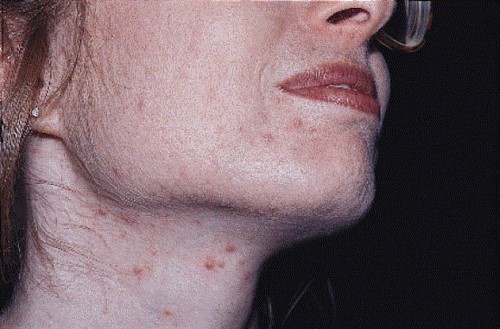Journal Scan / Research · October 20, 2020
Hydrogen Peroxide Topical Solution for Common Warts
TAKE-HOME MESSAGE
In this clinical trial, 157 patients (age >8 years) with 1 to 6 warts measuring 3 to 8 mm were treated with twice-weekly application of hydrogen peroxide 45% (HP45, n=79) or vehicle (n=78) for 8 weeks. Nearly one-quarter of patients experienced clearance of target wart by 8 weeks (vs 2.6% with vehicle), and at week 20 follow-up, clearance was seen in 37.3% with HP45 (vs 11.8% with placebo), indicating that there may be a continued response after stopping treatment at 8 weeks. There were 76 treatment-emergent adverse events in the HP45 group, all of which were mild or moderate, and none led to treatment discontinuation.
- These data support the efficacy and safety of an 8-week biweekly application of hydrogen peroxide 45% solution for treatment of common warts.
– Caroline K. Crabtree, MD
Abstract
BACKGROUND
No FDA-approved prescription therapies are available for common warts.
OBJECTIVE
We evaluated a proprietary hydrogen peroxide topical solution, 45% (w/w) (HP45) for treatment of common warts.
METHODS
In the phase 2 randomized, double-blind, vehicle-controlled WART-203 trial (NCT03278028), eligible patients aged ≥8 years had 1–6 warts (1 target wart) on the trunk or extremities with a Physician's Wart Assessment™ (PWA) grade ≥2 (range, 0 [clear] to 3 [wart 3–8 mm in diameter or length]). Patients self-administered HP45 or vehicle twice weekly for 8 weeks and were evaluated through 12 weeks posttreatment (week 20). Efficacy assessments included mean change in target wart PWA grade from baseline at week 8 (primary endpoint) and proportions of patients with target wart clearance. Safety assessments included treatment-emergent adverse events (TEAEs) and local skin reactions (LSRs).
RESULTS
A total of 157 patients completed 8 weeks of treatment (HP45, n=79; vehicle, n=78); 151 patients completed the 20-week posttreatment evaluation (HP45, n=75; vehicle, n=76). A significantly greater reduction in mean target wart PWA grade from baseline at week 8 was achieved with HP45 (−0.87) vs vehicle (−0.17; P<0.0001) and maintained at week 20 (−1.00 vs −0.39; P=0.0004). The proportion of patients with target wart clearance at week 8 was significantly greater with HP45 (25.3%) vs vehicle (2.6%; P<0.0001) and remained significantly greater at week 20 (37.3% vs 11.8%; P=0.0002). Forty-seven patients reported 76 TEAEs; most were mild or moderate in severity. Most LSRs were mild and resolved by week 20. In pediatric patients (HP45, n=13; vehicle, n=6), greater reductions in mean target wart PWA grade from baseline were observed with HP45 vs vehicle at weeks 8 (−1.0 vs 0) and 20 (−1.2 vs −0.5).
CONCLUSION
These findings support the efficacy and safety of HP45 for the treatment of common warts in patients ≥8 years of age. J Drugs Dermatol. 2020;19(10):969-976. doi:10.36849/JDD.2020.5054.
Journal of Drugs in Dermatology
Hydrogen Peroxide Topical Solution, 45% for Common Warts: Phase 2 Efficacy and Safety Trial Results
Sent from my iPhone
Benjamin Hidalgo-Matlock
Skin Care Physicians of Costa Rica
Clinica Victoria en San Pedro: 4000-1054
Momentum Escazu: 2101-9574
Please excuse the shortness of this message, as it has been sent from
a mobile device.









Systemic racism medicine takes many forms. This is a beautifully written editorial that relates to a simple measure that all physicians can take, especially dermatologists who are regularly creating wounds from biopsies or skin cancer treatment. We applaud the author, along with the pediatric dermatology editorial board, for publishing this piece. Making our patients more comfortable "in their skin" is a core component of what we do, and we ought to adopt this simple suggestion to consider dressings that match skin tone.
Thanks to Dr. Maggie Hammond for suggesting this article for inclusion, recognizing this as a topic for an editorial rather than research per se.